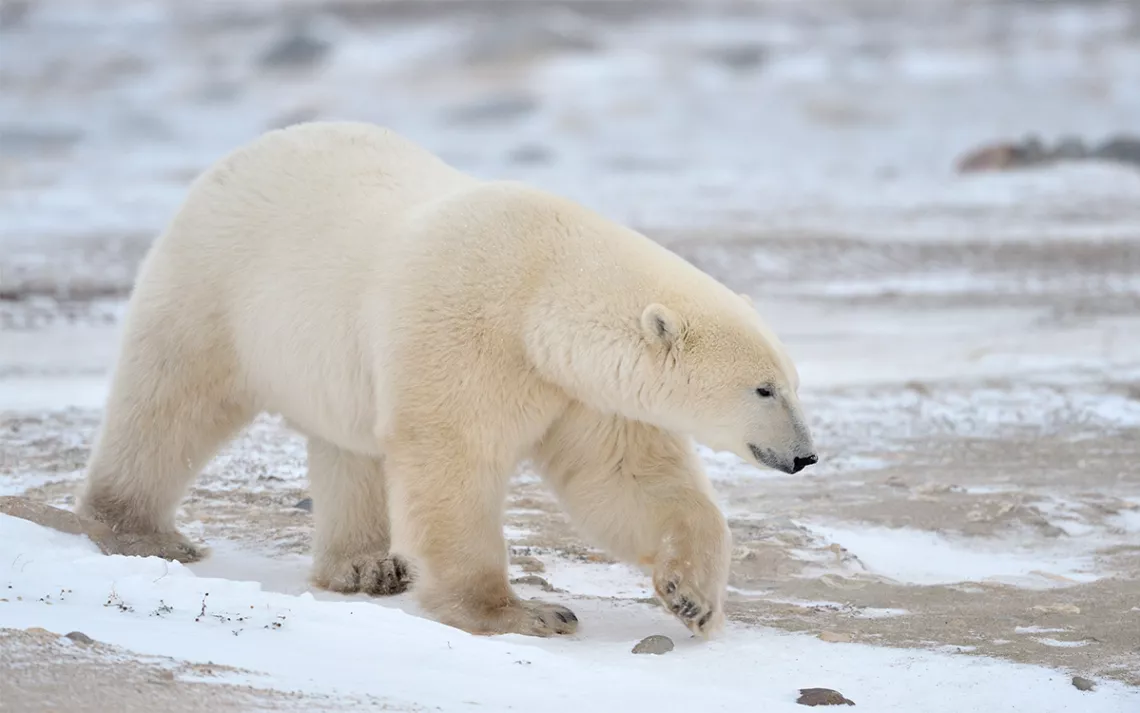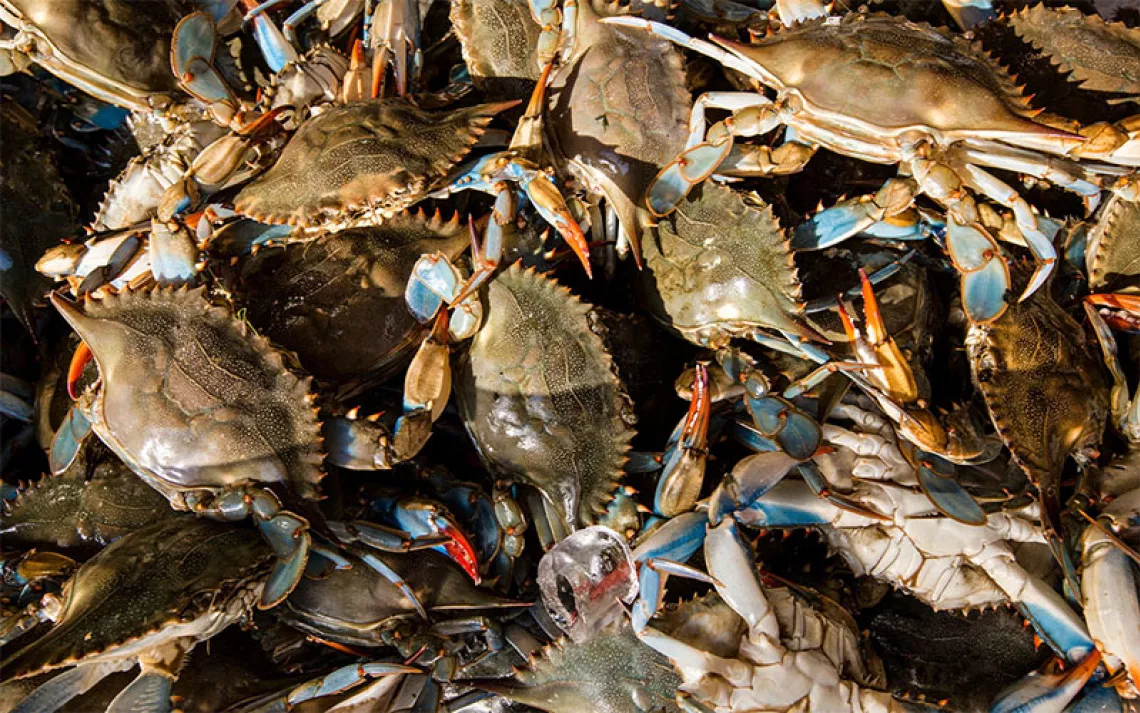People Show Up for Polar Bear Week, But the Ice Hasn’t Yet
Ice is forming later than it used to in Canada’s Hudson Bay

Photo by AndreAnita/iStock
The wait is over—at least for some of us. Polar Bear Week has arrived, but the polar bears of Canada’s Hudson Bay are still stuck on land.
Each fall, thousands of polar bears migrate to the bay to wait for sea ice to form, making up the largest concentration of these animals in the world. Polar Bear Week was created by Polar Bears International to celebrate this annual migration and draw attention to the fact that sea ice has appeared later and later in the season in recent years. It’s also an opportunity to educate people about climate change and inspire them to work to reduce greenhouse gas emissions.
According to chief scientist Steve Amstrup at Polar Bears International, there’s hardly any ice in the Hudson Bay as of yet. “The bears are still waiting on shore for that ice to freeze,” Amstrup says. “They can only catch their food—which is mainly two species of seals—from the ice.”
Amstrup has researched polar bears for 30 years and is currently in Manitoba. He estimates that the bears there haven’t eaten in 150 days. “A lot of people don’t understand that polar bears depend on the sea ice for food,” he says. “When they are stuck on land, they are essentially food-deprived. Nursing cubs start to be impacted after 110 days of sea ice absence, so at 150 days we’re seeing poor survival of cubs.”
The good news is that so far, this year’s temperatures are cooler than last year’s. “This time last year we hadn’t seen anything close to 0°F,” Amstrup recalls. “We’re hoping that it means the bears are going to be able to get out on the ice sooner than they did last year.” But he emphasizes that we shouldn’t get too excited about seasonal variations when the Arctic is warming faster than anywhere else.
Polar Bear International partners with explore.org to operate a number of webcams through which bear lovers worldwide can watch the sleepy polar bears wait for ice. They broadcast live from 6:30 A.M. to 1:30 P.M. PST through the end of November.
According to Amstrup, the only way to save polar bears is to stop global temperature rise. “What people need to do is talk to their elected representatives,” Amstrup says. “The average person can write to their senator or U.S. representative, and they can vote. On top of that, they can do individual things like turn their thermostat down in the wintertime and up in the summertime, carpool, take public transit, drive less, ride bikes more, walk more. But those are low hanging fruits in this battle; they won’t by themselves save polar bears.”
Amstrup predicts that at this rate, about two-thirds of the world’s polar bears will be gone by the middle of this century, and the rest by the end of it. “Polar bears are an early indicator of what’s coming to all of us if we don’t change our ways,” Amstrup says. “If we allow ourselves to lose polar bears, we’re going to lose much of the rest of life on Earth, and it ultimately will directly impact us.”
 The Magazine of The Sierra Club
The Magazine of The Sierra Club



